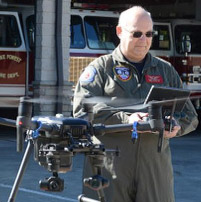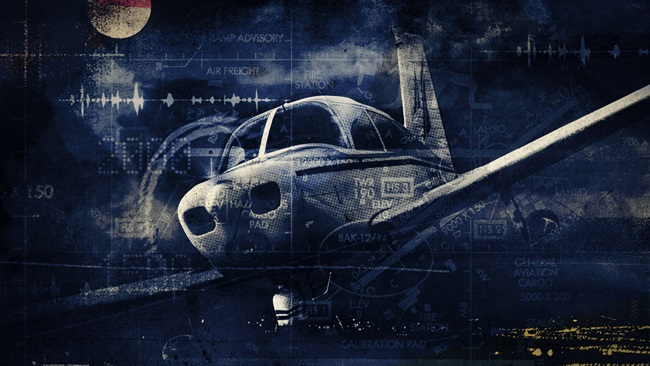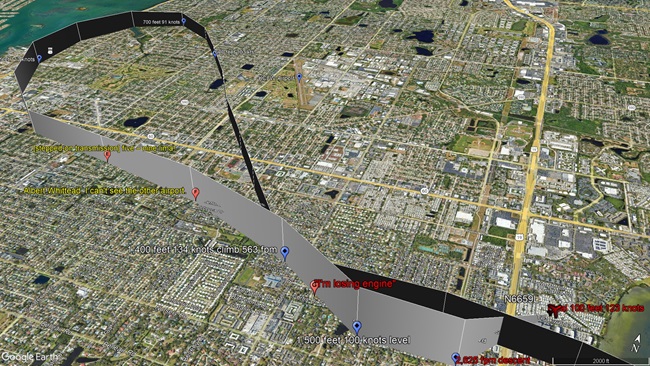Get ready for night flight
A perfect time to refresh your knowledge
A flight instructor once told me that a pilot will never have more technical knowledge than they do on the day they pass their checkride. Remote pilots do not have a practical test to pass, but the principle of the “forgetting curve” still applies, and the clock starts ticking as soon as you stop active learning. There’s a solution for that: Keep learning.
With various regulation changes taking effect in March and April, including one that will soon allow remote pilots to fly at night without a waiver, there’s no better time than now for a refresher.
Part of growing our skills is to take a fresh look at some assumptions and update our memories. All pilots suffer from a natural phenomenon known as the forgetting curve. (My wife will attest to this.) First hypothesized by German psychologist Hermann Ebbinghaus in 1885, it’s basically a math formula that describes how memory fades over time.
If you want to be a good pilot, strive to be a great pilot. If you want to be a great pilot, make a habit of refreshing your recollection on a regular basis, not just when it’s time to prepare to take a test.
I teach and advise public safety operators who operate under Part 107, under a certificate of authorization (COA) for public aircraft operations, or both. One nice thing about teaching is that you learn a lot while you’re at it, and a seemingly innocent question from a police department pulled a thread that unraveled into a deep dive on what the rules really say, and what they don’t.
Read on to reap the rewards and pick up a few fresh facts for your brain go-bag:
Light it up for civil twilight
Now that remote pilots will be allowed to fly at night without a waiver (after completing the updated Part 107 remote pilot knowledge test that the FAA will make available April 6), the definition of civil twilight is worth revisiting.
You might be used to seeing the local sunrise and sunset times in your favorite weather app, but that’s not civil twilight in the eyes of the FAA. Evening civil twilight starts when the geometric center of the sun is just below the horizon, and ends when the center of the sun is 6 degrees below the horizon. (For Part 61 pilots, civil twilight is relevant to both currency requirements and logging flight experience as “day” or “night.”)
According to FAR 107.29, "No person may operate a small unmanned aircraft system during periods of civil twilight unless the small unmanned aircraft has lighted anti-collision lighting visible for at least 3 statute miles."
Civil twilight typically begins about 30 minutes before sunrise and ends about 30 minutes after the official sunset, except that can extend quite a lot depending on your latitude. In Alaska, where the summer days can extend around the clock, civil twilight can also stretch.
Thankfully, it’s pretty easy to learn when civil twilight begins and ends on any given day, at any given location. I use AirNav.com to look up the nearest airport listing. On the right side of the page you will find listed times for sunrise, sunset, morning civil twilight, and evening civil twilight. You can also go to this website and check the times for your location.
Anticollision lights are required during the night as well. Or as I like to call it, that period squished between civil twilight periods—the dark bit.
It's interesting how one subpart of 107.29 can be a real gotcha: Because the drone you are flying has not been certified as airworthy by the FAA, you will have to self-certify that your strobes are compliant. Manufacturers of anticollision lights might say the strobes can be seen for 3 statute miles, but you can't take their word for it since they have not been certified by the FAA as meeting the requirement. If you ever have an incident or accident, you will not want to tell the insurance company, the FAA, the NTSB, the city attorney, or anyone else that you took the product packaging at face value. Trust me on this.
Here's another thing that remote pilots may not know: There are many federal aviation regulations that you need to comply with that do not start with “Part 107.” For instance, FAR Part 91.3 applies to the pilot in command of any aircraft. The FAA does not exclude remote pilots from the responsibilities of a pilot in command, nor does it limit a remote pilot’s authority to deviate from any regulation in an emergency “to the extent required to meet that emergency.”
Since you are the “final authority” when it comes to “operation of that aircraft,” it’s a good idea to confirm that your anticollision lights meet the requirements. It is not difficult if you have at least one friend, and two available locations that are 3 miles apart with a clear line of sight. I used a nice long set of straight and level power lines to do my self-certification.
It would be a mistake to assume you can fly 3 miles out and confirm the strobes are still visible. You can't do that, because that would be beyond visual line of sight for any small unmanned aircraft on the planet. More on that in a moment.
The compliant way to test would be for you to station your friend at a point 3 miles away, take off, climb to an altitude less than 400 feet agl, and phone your friend to confirm they can see the strobes.
Once you have confirmed the visibility, make an entry in your aircraft logbook of the date, what you did, the results, and who assisted you. If you change or replace your lights, you will need to do this again. This is not the only good reason to maintain an aircraft logbook, by the way. Keeping track of battery life cycles (they are limited), routine maintenance, and defending your actions after the fact in case anything does go sideways are all much easier when you have written records.
The strobes are not for you
I have talked to many pilots who believe that the strobes are used to keep the aircraft “in sight” at night. There is also a common misconception that a visual observer’s job is to do the same. While it is true that strobes can help make the aircraft portion of an unmanned aircraft system (UAS) more visible from the ground, the purpose of the strobe lights and the visual observer is to avoid collisions with manned aircraft.
It can be tempting to assume that as long as the strobes are visible, all is well and legal when flying at night (or during civil twilight). But the strobes are required so that manned aircraft can see your drone.
Being able to see a flashing light is not the same thing as having your aircraft “in sight.” Flying at night does not waive the requirements of FAR 107.31 to keep the aircraft within visual line of sight. Let that sink in for a moment.
If you are flying at night, the maximum distance you can fly from your position (or that of your visual observer) is limited by your ability to determine, at all times, several important aspects of the flight, which can be easier to remember with one of the newer aviation acronyms, LAASDON:
- L–location.
- A–altitude.
- A–attitude.
- S–speed.
- D–direction of flight.
- O–obstacle clearance.
- N–not a hazard to other aircraft or persons or property on the ground.
In chatting with some other public safety pilot friends, we concluded that on one of those dark, murky moonless nights, the maximum legal distance would be between 300 and 800 feet from the pilot and/or observer. It can be even less than that if trees, weather, or other obstacles block your view.
Beyond visual line of sight
While further changes may come as remote identification is implemented, the FAA has not made a habit of approving waivers for flights beyond visual line of sight (BVLOS). In most cases, such waivers require strict controls and specific risk mitigations, such as active radar surveillance of the airspace.
Government or public aircraft pilots flying under a COA have often assumed they can fly BVLOS in an urgent situation, but that is not accurate. The FAA has told me that at least 90 percent of the COAs issued to date do not allow for BVLOS flight. Flight operations must remain visual and meet the LAASDON requirements mentioned above.
Tactical BVLOS misunderstood
Now we come to the tactical BVLOS emergency waiver. Here is another assumption that I see pilots making that is not accurate.
The First Responder Tactical Beyond Visual Line of Sight (TBVLOS) waiver has some restrictive obligations. While those of us who have obtained such a waiver are well aware of the requirement that the UAS remain within 1,500 feet of the pilot, it is not as clear that a TBVLOS waiver does not waive the line of sight requirement.
If you get a TBVLOS waiver and look closely, you will notice it does not expressly waive a visual observer's requirement to maintain and confirm LAASDON.
TBVLOS waivers are only available for COA holders and their pilots, who have to be certified by the agency to meet or exceed Part 107 remote pilot standards. TBVLOS waivers are reserved for use "during an extreme emergency to safeguard human life," and they always require a visual observer. TBVLOS waivers are not to be used or appropriate at any other time.
Under a TVBLOS flight, the visual observer(s) must be able to see the drone at all times that the PIC is unable to see it.
If you look at the FAA briefing on TBVLOS you will see the excellent images of how remote pilots and visual observers can work together.
If circumstances require the pilot and visual observer to be located too far apart for voice communication, remember that a public safety radio is not the right tool to communicate because only one person can talk at a time. Something like a cellphone or a full-duplex radio is required.
Mea culpa
Please don't think I'm trying to be preachy here. I am guilty of forgetting some of these issues myself. It is easy to let mission creep push or drag us further and further from our duties.
While the current rules may feel restrictive, the good news is that some drones are currently undergoing airworthiness certification, and when those are finally approved, they—and we—will have more capabilities.
Staying on top of the ever-changing rules and washing away our assumptions is work we must do.




